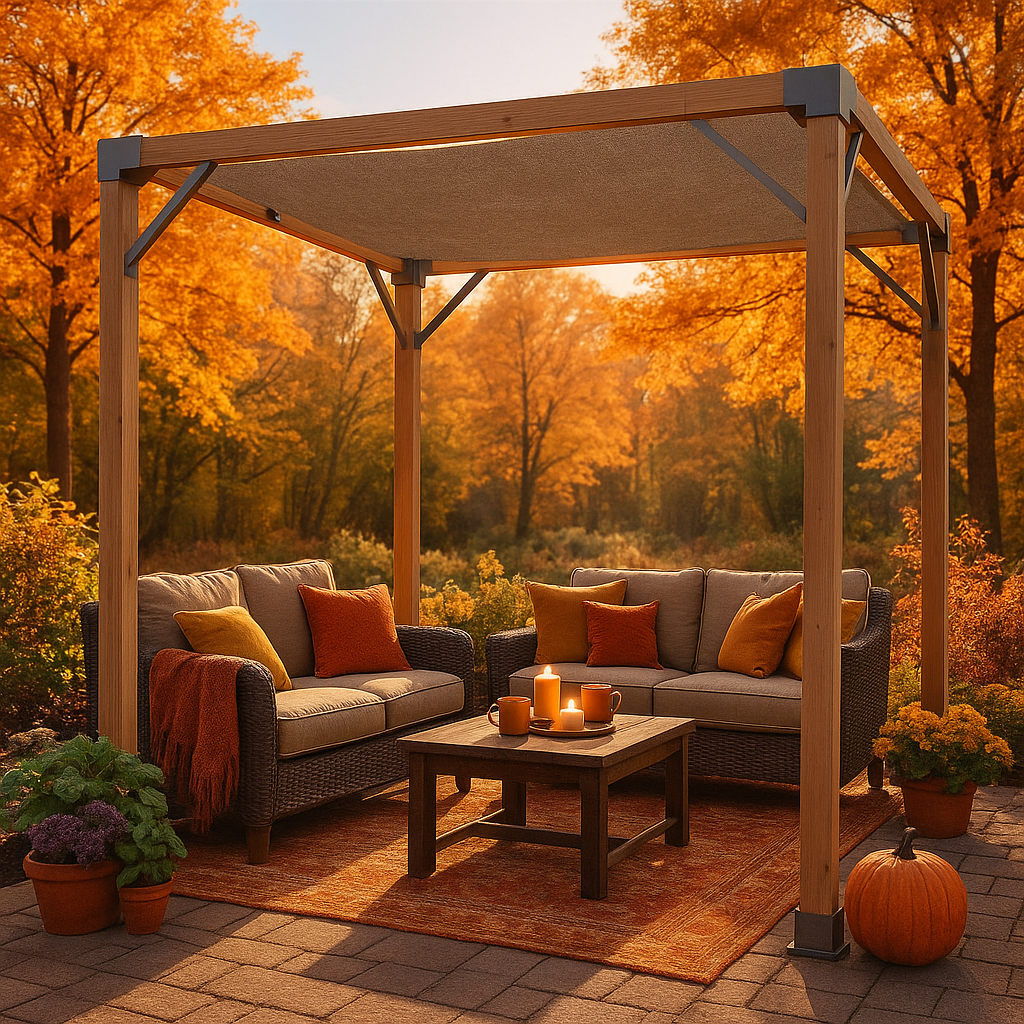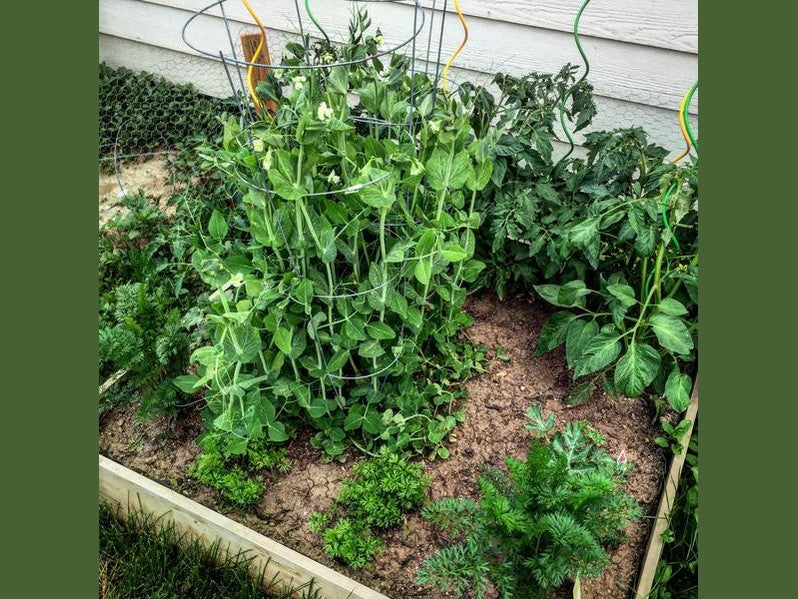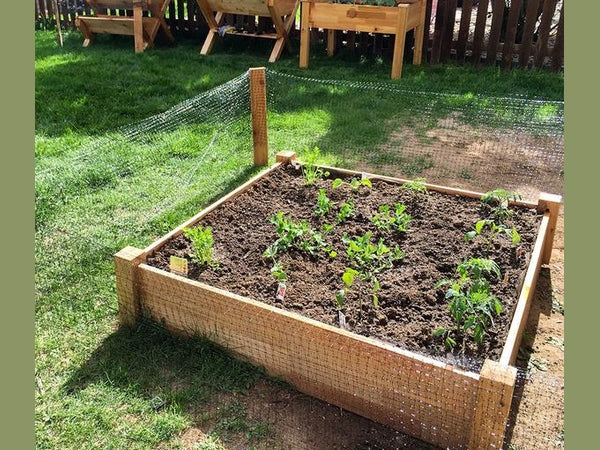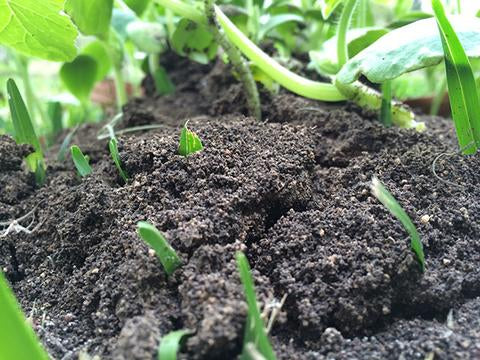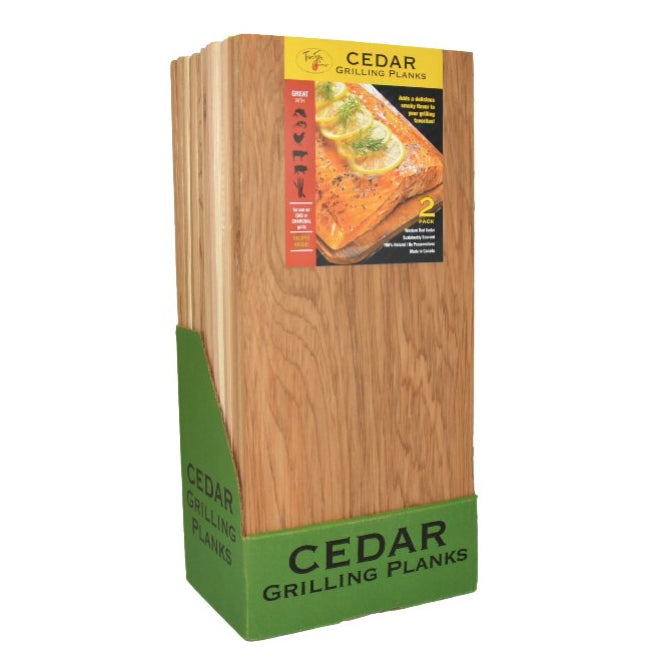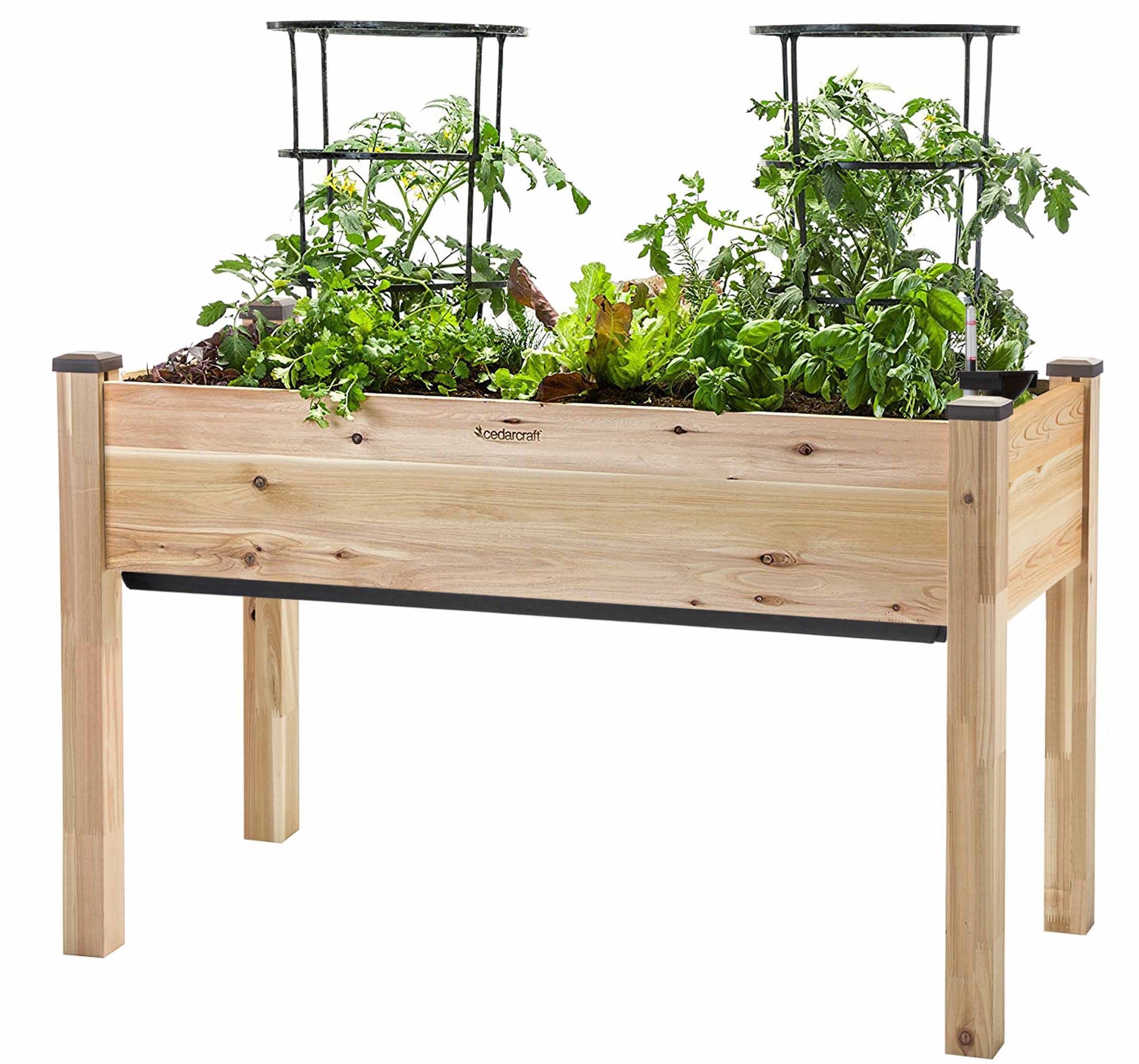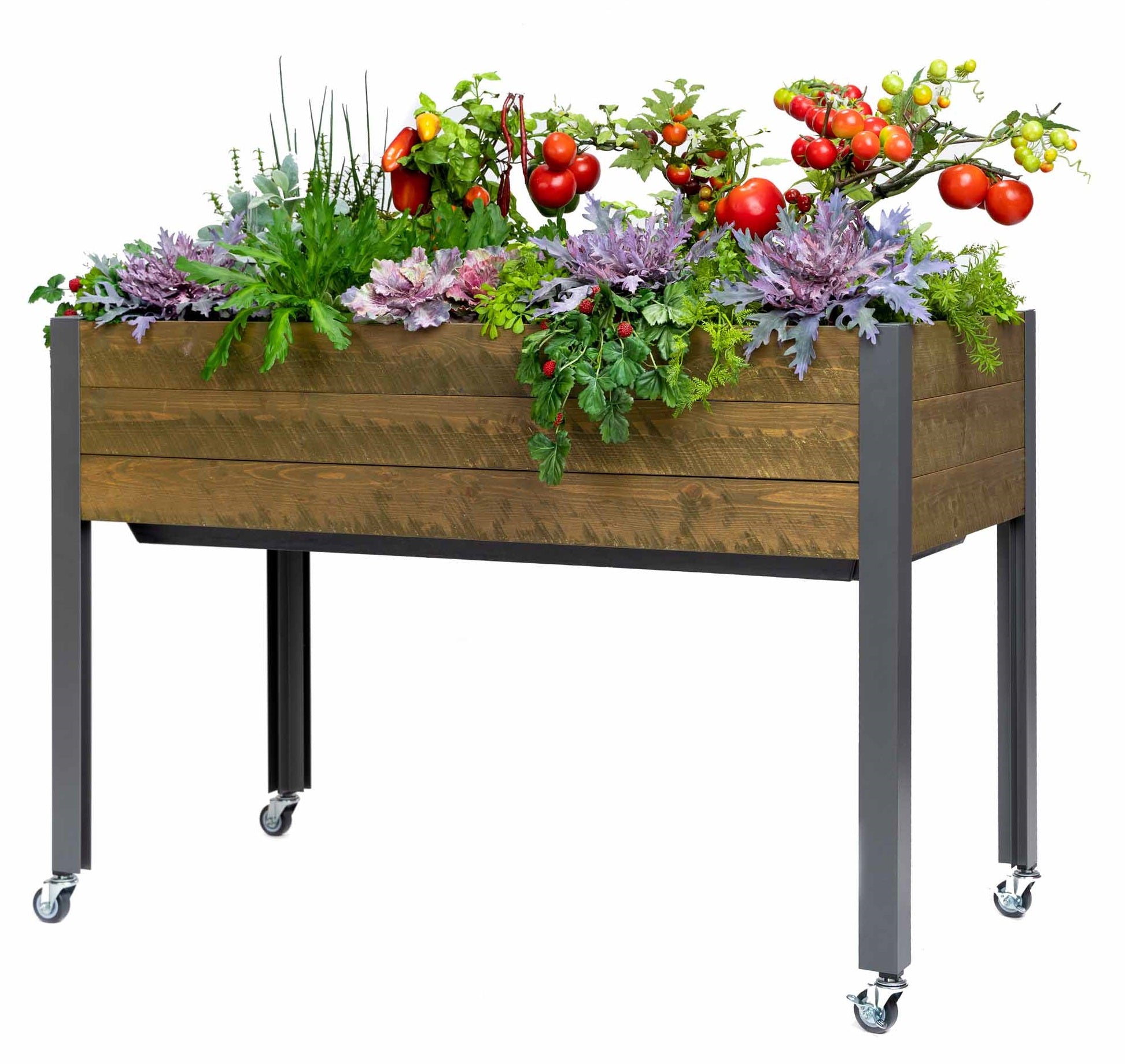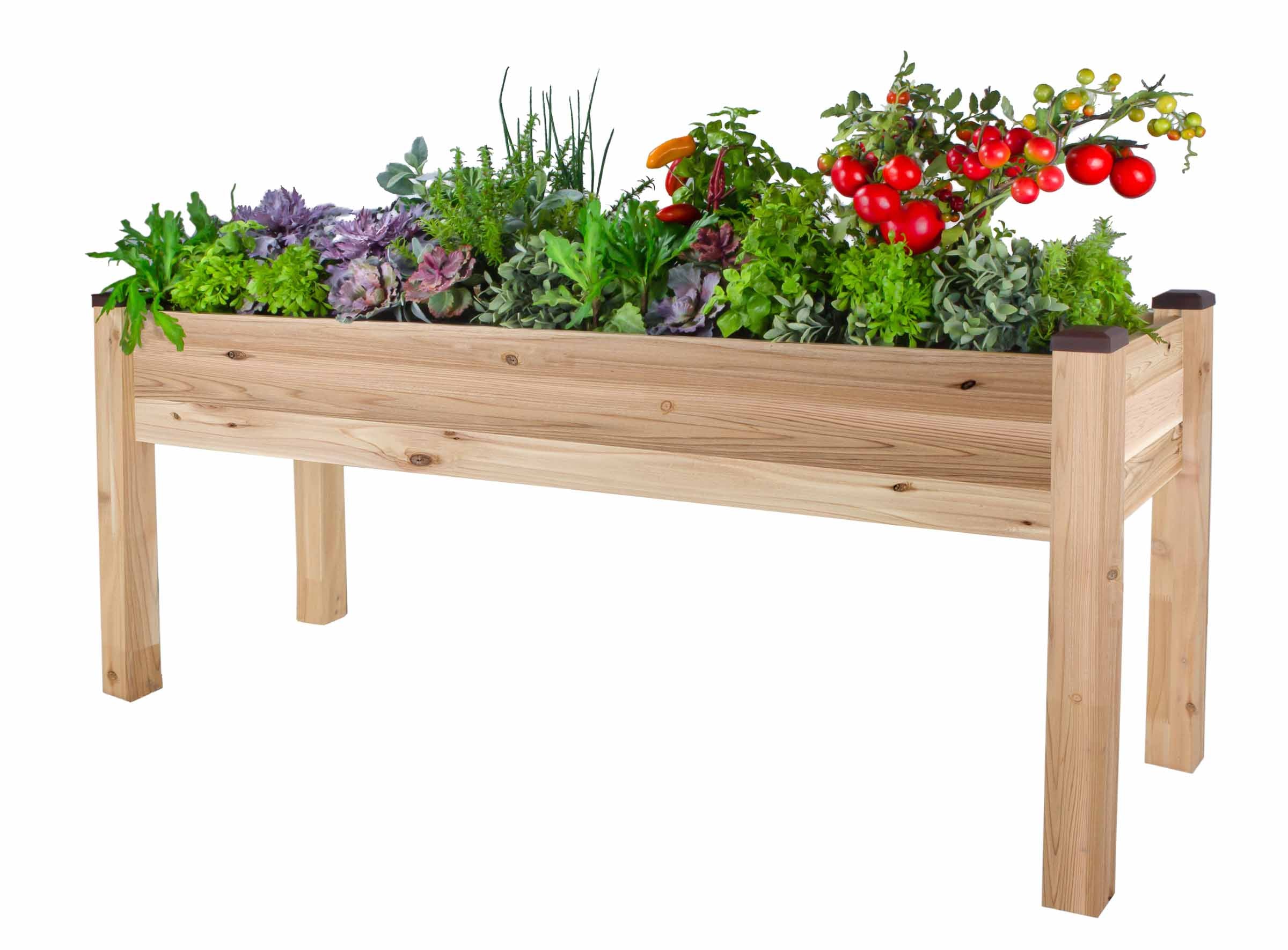Gardening Adventures
Container Garden Soil 101
Soil is arguably one of the most important aspects to growing a successful garden. It's the foundation of where your food and flowers come from! You can plant your garden in any container, and purchase your seeds from anywhere, but it's your soil that will make your garden grow. Container gardening is a little different than a traditional garden, and we want you to have your most successful CedarCraft garden yet. Here is a handy rundown of what you need to know about container gardening soil to have a bountiful harvest. Garden Soil Is Not Container Soil As tempting as it might be to transfer your garden topsoil to your container garden, that's a sure way to stunt your planter garden's growth. Container gardens need ample air, water, and nutrients from the soil to support your sprouting plants. By using garden soil, it will be easy to flood your garden and drown your plants, while decreasing their nutrients in the process. You should fill the containers with a "soilless" blend that will retain lots of moisture and resist compaction. Compaction is what will decrease the amount of air by the roots, and inhibiting growth by making it more difficult for the sprouts to break through the surface of the soil. Mel's Mix is a tried and true container soil that will work well in both your planter and raised garden bed! Warm Soil Advantage While your neighbors may be spending time doing soil prep work for their garden, you're ahead of schedule with your planters! Container soil will rarely freeze and is easy to maintain over the winter by covering your raised garden bed with leaf mulch or a tarp. Because the soil maintains warmth, it's less work for you and it extends your growing season! If you do find cold soil to be any problem, you can place rocks in your garden to help distribute heat from the sun. Watch Your Water One of the biggest challenges with container gardening is maintaining the moisture balance in your soil. It can be easy to over-water and flood your flowers, but it's also easy for them to dry out quickly. Vegetables need air just as much as water in the soil. You can use straw or mulch to help maintain moisture, prevent over-watering, and prohibit water splashing on the leaves and fruit, potentially causing damage. Rotate Your Soil Just like our farmer friends in the field, container soil becomes depleted over the years, especially if you're continually growing the same vegetables in it from season to season. The soil breaks down, creating compaction, drainage issues, depletion of nutrients, and can it promote the growth of disease in your plants. You can freshen up container soils by adding a fresh blend whenever you start your planting season. Just replace 25% of the mix with a new medium. Don't forget to add some air into the mix by loosening the soil in the planter, while breaking up the clumps and picking out any roots. You can stretch the life of your planter and raised garden bed soil for several seasons. After 6 to 7 years it may be time to replace your container garden soil and start fresh.
Learn moreLessons Learned From Planter Gardening This Season
Gardening is a mix of science and art. It’s possible that you can carefully craft the perfect garden space with optimal soil nutrients, ideal sunlight, and a well-timed watering system and have nothing go as planned. Even the best gardeners experience challenges during the growing season, and sometimes they have complete garden fails. Gardening is a learning process for everyone, not just a product, which is part of the appeal. It’s also comforting for beginning gardeners to know that even the most experienced gardeners still have their obstacles to overcome. Many of the pros live by the philosophy, “If you’re not killing plants, you’re not stretching yourself as a gardener.” Our CedarCraft team field-tests each one of our planters during the gardening season, growing a variety of fruits, vegetables, herbs, and flowers in the process. You can see how our own gardens grow on Instagram as we share photo updates throughout the year. Rest assured, even though our garden may look beautiful, we experience our own challenges too. We’d love to share some lessons that our Colorado team learned from the 2015 gardening season. Weather This is one of the biggest hurdles for every gardener around the world, and it has been since the beginning of time. Floods, droughts, cold snaps, high winds, and hail are all elements that can wreak havoc on your garden. Our Colorado team had an exceptionally wet and cold-ish May, right when the planting season began. It was a little too much for the cucumbers to bear and we lost them all. Lesson Learned: Patience is a virtue, especially in gardening. It’s better to wait a little longer than jump the gun when planting your starters to make sure they have a good chance of establishing roots. Soil We spent a lot of time on procuring the right mix of soil for all of the planters this year. What we found was with that particular mix, our tomatoes flourished and thrived in the ground planters, but our spinach and lettuce greens needed a little more help with the same mix in the Urban planter. We had to switch out soils in that planter, and once we did, the spinach grew like wild! Lesson Learned: Ground planters with sturdy plants do well with the soil mix we wrote about earlier this year. The Elevated planters will do better with a softer container soil mix. Water We did pretty well with keeping up on our watering cycles this year! Nothing dried out or wilted… until we went on vacation. Summer is a time to enjoy vacations with kids out of school and the warm-weather adventures at your feet. Our Colorado team went on a backpacking trip for a few days thinking that the garden would be OK. While there were cool temps in the high country, it was a lot warmer in the flatlands. We came back to find some of the plants drier than they should have been, which caused a few to bolt early. Lesson Learned: set up watering systems if you can, and at the very least, have a neighbor or friend come over to water your garden while you’re on vacation. We have some exciting new developments with our product line in 2016 that will help you with this! Look for an announcement in January. Pests This may have been the biggest challenge for us this year above all else. Rabbits scaled chicken wire fences to nap in the cilantro, birds filled up on strawberries, squirrels pilfered the peppers, and bugs munched on kale and cauliflower. It was garden warfare despite our best efforts with all methods of pest control. Lesson Learned: We’re still learning. We’ll see what we can do to lessen the likeness of “Mr. McGregor’s Garden” in 2016. Unexpected Experiments We had one planter that we lovingly called the “misfit garden” where we planted extra starters and companion planted plants that you’re not supposed to place next to each other. We didn’t have high hopes for this section of the garden, but decided to take the risk anyway to see what would happen. There were some fails in there for sure, like the extra cauliflower plants not producing anything at all, but we found some unexpected success, like potatoes and pumpkins thriving!! Lesson Learned: It’s OK to take risks! Don’t be afraid to fail, because you might just experience some unexpected successes. And sometimes those are the best! Despite our own challenges this year, we came out of it with first-hand knowledge to apply in the 2016 growing season, and we had some delicious harvests along the way. We’re certainly looking forward to the gardening adventures that the next year will bring!
Learn morePlanting Your Garden
The sun is shining, the grass is green, it’s time to get your hands dirty and plant your garden! Here are the things we've covered in other CedarCraft blog posts on what you need to know before you get those plants in your soil: How much soil do you need and what kind of mix? How to plan out your garden - considering square foot layout and companion planting How to keep critters out of your garden Now it’s time to get the details on how to plant a plethora of fruits, herbs, and vegetables in your planters! If you are a beginner gardener, your best bet is to establish your garden with starters rather than seeds. This will reduce the margin of error for you as you gain more hands-on experience. When choosing where to purchase your starters, avoid Big Box hardware and garden stores. They often have plants that are sick with disease, which will spread to healthy plants in your planters. Visit your local garden center where the plants have been grown there or the surrounding area. Plus, the gardeners working there LOVE to share their wealth of knowledge to help you out. Local farms and CSA’s will have plant sales in the spring, giving you the opportunity to grow exactly what your favorite farmer has decided to produce for crops that year. These are generally organic and GMO-free plants as well. Horticulture organizations and university departments will host starter sales as a fundraising source for students. This is a great way to get plants at an affordable price while supporting local gardeners in your area! Once you’ve purchased your plants, roll up your sleeves, because you’re about to play in some dirt. Because you’ve mapped out your garden, getting the plants in is pretty easy. A calm, overcast day is ideal for planting conditions, but it’s not a problem if you’re planting on a sunny weekend. Make sure your plants are well watered in their cell containers and stay nice and snug in there until the very last minute. You want to protect the tender roots from sun and wind exposure to reduce the amount of shock they’ll go through in the transferring process. Prepare your soil by watering your planter so that the plants aren’t going in dry spot. They’ll need a lot to drink to get established! After digging each hole, add some more water before placing the plant in. Then after gently covering the top (not packed down, because the roots need air), water it again. Transferring plants can be a stress on their roots and health, so you’ll need to keep a close eye on them for a week or so. Make sure there’s enough water to keep the soil moist, but not too much to drown them. You may need to water frequently if you see them begin to wilt. You may also want to shield them from sun and wind during that week if your climate is especially harsh. After a week or two, their roots should be established and leaves will be a perky green as they have settled into their new CedarCraft planter home!
Learn morePlanning Your Garden
Gardening is a treasured hobby for many people. It’s a way to relax, spend time connected to the Earth, all while providing a moment to breathe in the aromas of soil and flowers. It’s also a way to become food-independent, allowing people to grow their fruits, vegetables, and herbs on their own – the way they want it grown. However, that’s not true for everyone! Gardening may seem intimidating to others, especially beginner gardeners who don’t have the years of hands-on experience. People who’ve never started their own garden often say they have a “black thumb” holding the perception that there’s a steep learning curve to growing plants. We’re going to help make it a little easier for you! At CedarCraft, we’re big fans of the Square Foot Gardening concept developed by Mel Bartholomew. Square Foot Gardening is a uniquely simplified system of gardening that eliminates 80% of the: Space Work Weeds Watering Waste Square Foot Gardening creates a planting grid within your planters with each crop having its own square. There are four spacing guidelines: Extra Large fruits and vegetables are allowed one plant per square for 12 inch spacing Large fruits and vegetables have 4 plants per square for 6 inch spacing Medium allows for 9 plants per square for 4 inch spacing Small fruits, vegetables, and herbs have 16 plants per square for 3 inch spacing. You can use the seed packet to find out what spacing your plant needs. A tomato or green pepper plant needs one per square, while radishes and carrots need 16 per square. There are online planning guides that can help you map this out, too. This system works perfectly with your CedarCraft planters. We’ve broken down the square feet in each one of our planters for you: CedarCraft Cascading Planter CedarCraft Elevated Planter CedarCraft Urban Planter CedarCraft Raised Garden Planter Once you have a grid system mapped out, you’ll need to double check a companion planting guide to make sure your plants can share the same planter. Some plants don’t grow well together. Beans: Don’t plant near chives, garlic, leeks, onions, peppers, marigolds Peas: Don’t plant near chives, garlic, leeks, onions, peppers Broccoli and Cauliflower: Don’t plant near peppers, squash, strawberries, tomatoes Tomatoes: Don’t plant near broccoli, cauliflower, cilantro, cucumbers Dill: Don’t plant near carrots You can follow our CedarCraft Pinterest boards for gardening tips, companion planting guides, and examples of what people are growing in their own Square Foot Gardens!
Learn moreHow To Get Your CedarCraft Garden Started
Getting your urban garden together doesn't have to be a complicated process. You may live in a small space, or have limited resources, and the thought of constructing a planter might seem like a daunting process. Luckily, it isn't with CedarCraft! One of the great things about CedarCraft planters is that you don't have to spend a lot of time or effort putting them together. With just a few simple steps, and no tools needed, you can make your gardening ideas come to fruition in a matter of minutes. CedarCraft planters come with step-by-step instructions right out of the box. They're also available on our website. Each piece of the planter fits together perfectly and instructions are a breeze. Inside tip for your Urban Planter: make sure you assemble the leg pieces so that the dowel holes are facing toward the inside of the planter and the panel grooves are on the outside edge. You'll know if you've mixed them up on step 3. It will only take you 10 minutes to assemble your planter and you're right on your way to growing your dream garden! A video posted by CedarCraft (@cedarcraft) on Jan 21, 2015 at 12:24pm PST
Learn moreIt all starts with an idea
Welcome to CedarCraft's blog where we are going to help your ideas come to life! Each month we're going to share tips and inspiration to help you add freshness and beauty to your home in creative and simple ways. We'll help you get the most out of your raised gardens for a successful harvest of herbs and vegetables. And we'll share easy design projects to add that "something special" to your living spaces.
Learn more

